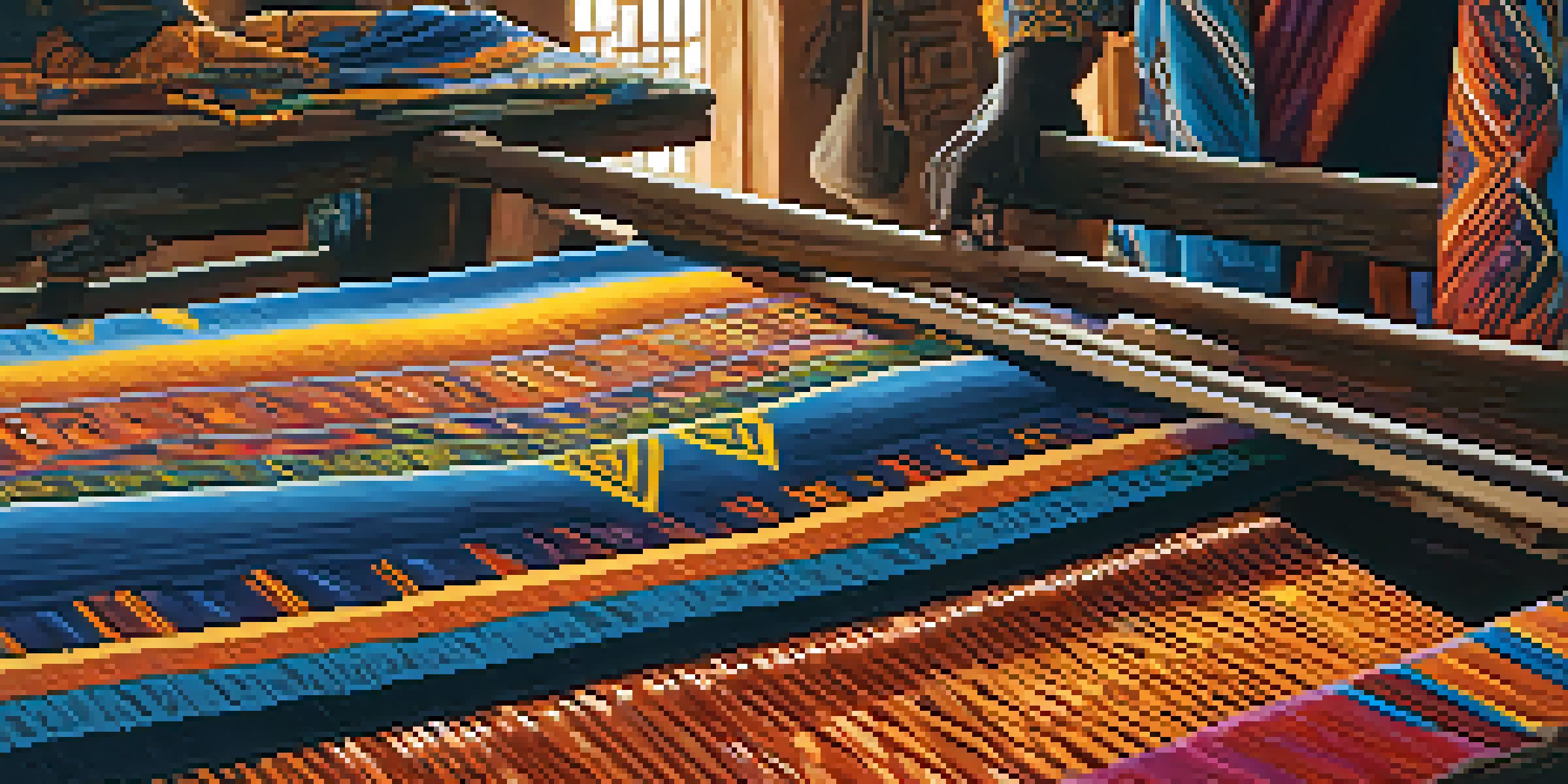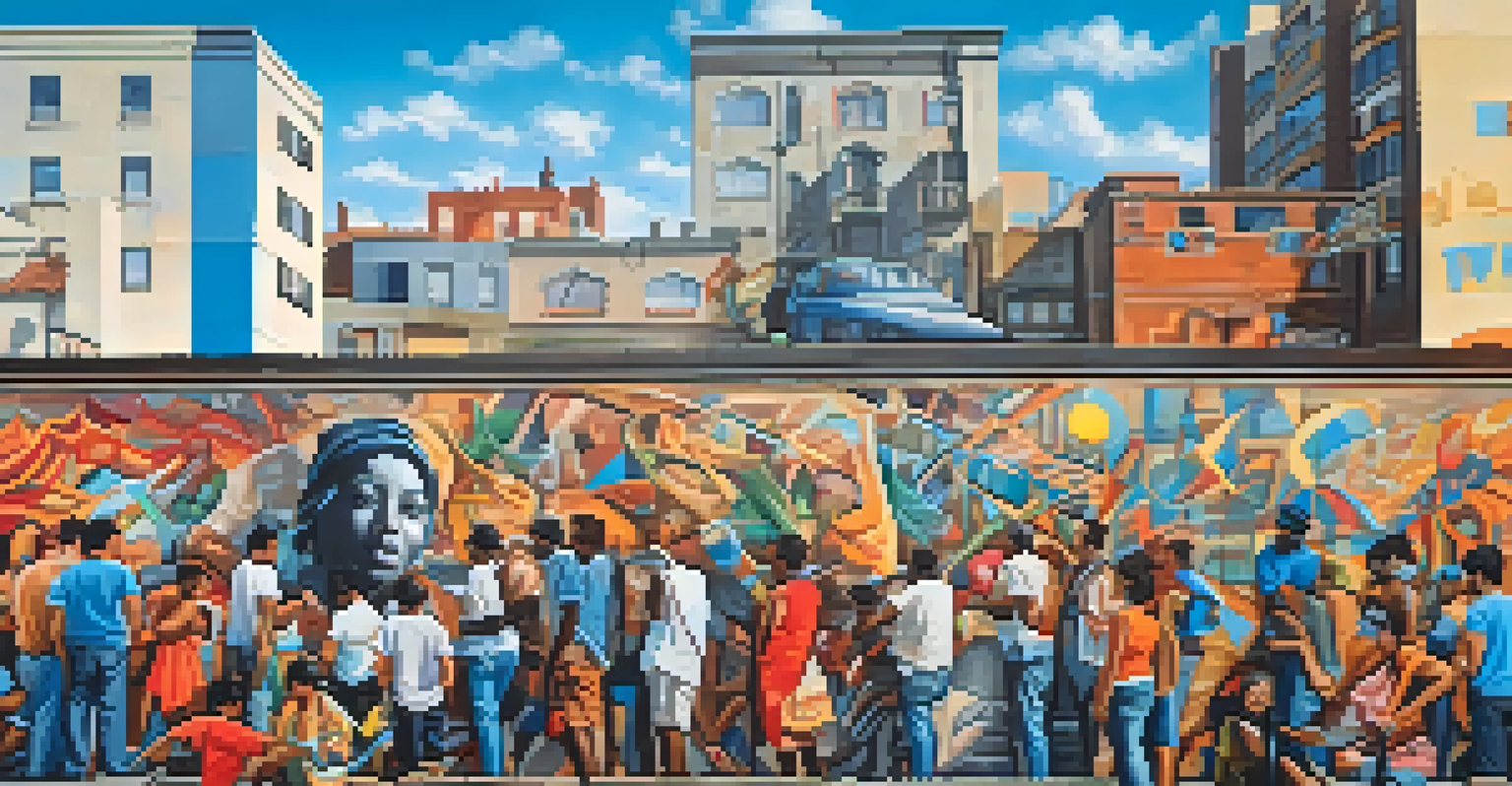Cultural Values in Art: A Study of Global Artistic Expressions

Understanding the Connection Between Culture and Art
Art is a powerful mirror reflecting the values and beliefs of a culture. From ancient cave paintings to modern installations, artistic expressions often convey the ethos of the society they originate from. These creations not only serve aesthetic purposes but also communicate deeper messages about identity, tradition, and social norms.
Art is not freedom from discipline, but disciplined freedom.
For example, Indigenous art often emphasizes spirituality and a deep connection to nature, showcasing the values that are central to those communities. Similarly, European Renaissance art reflected the cultural shift towards humanism, highlighting individualism and the beauty of the human experience. Such examples illustrate how art can encapsulate the essence of a culture.
Related Resource
By studying these artistic expressions, we gain insight into the historical and social contexts that shape them. This understanding enriches our appreciation of art and allows us to see it as a vital component of cultural identity.
Diverse Artistic Mediums as Cultural Expressions
Different cultures utilize a variety of artistic mediums to convey their values and stories. From painting and sculpture to dance and music, each medium offers unique avenues for expression. For instance, the vibrant textiles of West African cultures often tell stories of ancestry and community through intricate patterns and colors.

In contrast, Japanese calligraphy, known as 'shodo,' emphasizes simplicity and harmony, reflecting the cultural appreciation for nature and tranquility. This diversity in mediums showcases how art can manifest in countless forms, yet each serves to communicate cultural values uniquely.
Art Reflects Cultural Values
Art serves as a mirror, revealing the values, beliefs, and identities of the cultures from which it originates.
By exploring these varied mediums, we can appreciate the creativity and ingenuity of different cultures. Each form of art serves as a testament to the values and experiences that shape a community's identity.
The Role of Folk Art in Cultural Preservation
Folk art plays a crucial role in preserving the cultural heritage of communities. Often passed down through generations, these artistic practices help maintain traditions and values that might otherwise fade away. For example, Native American pottery not only serves a functional purpose but also embodies the stories and beliefs of the tribe.
Every artist dips his brush in his own soul, and paints his own nature into his pictures.
Similarly, Mexican folk art, such as papel picado and piñatas, reflects the rich history and vibrant culture of Mexico. These art forms connect people to their roots and foster a sense of belonging, highlighting the importance of cultural preservation.
Related Resource
By engaging with folk art, communities can keep their traditions alive while also sharing them with the broader world. This exchange enriches global culture and promotes understanding and respect among different societies.
Modern Art and Its Reflection of Contemporary Values
Modern art often challenges traditional norms and reflects the complexities of contemporary society. Artists today are using their work to address pressing social issues such as climate change, inequality, and identity. For instance, installations that incorporate recycled materials not only create visually striking pieces but also comment on sustainability and consumerism.
The rise of street art is another example of how modern artistic expressions reflect current cultural values. Artists like Banksy use public spaces to provoke thought and inspire dialogue about social justice and political issues. This accessibility allows art to engage a wider audience, making it a powerful tool for change.
Folk Art Preserves Heritage
Folk art plays a crucial role in maintaining traditions and cultural heritage, connecting communities to their roots.
As we navigate an ever-evolving world, modern art continues to serve as a platform for dialogue and reflection. It encourages us to examine our values and consider how they shape our collective future.
Globalization and the Fusion of Artistic Cultures
Globalization has led to a fascinating fusion of artistic styles and cultural expressions. As artists from different backgrounds collaborate and share their influences, we see a blending of traditions that creates something entirely new. This cross-pollination can lead to innovative art forms that reflect a shared global culture.
For example, the incorporation of African rhythms in contemporary pop music illustrates how cultural exchange can enrich artistic expression. Similarly, the use of traditional Asian techniques in Western painting highlights this blending of influences, creating a dialogue between cultures.
Related Resource
While globalization allows for this enriching exchange, it also raises questions about cultural appropriation and authenticity. Navigating these complexities requires sensitivity and respect for the origins of artistic practices.
Art as a Tool for Social Change and Awareness
Art has long been a vehicle for social change, serving to raise awareness and inspire action. Throughout history, artists have used their work to comment on societal issues and advocate for justice. The powerful imagery of protest art, for instance, captures the spirit of movements and galvanizes communities toward a common cause.
An example of this is the 'Art for Social Change' movement, where artists collaborate with communities to address local issues through creative expression. This approach not only empowers individuals but also fosters a sense of solidarity and collective action.
Modern Art Inspires Social Change
Modern art is increasingly used to address contemporary social issues, fostering dialogue and promoting awareness of important causes.
By harnessing the emotional power of art, communities can effectively communicate their struggles and aspirations. This transformative potential reinforces the idea that art is not just a reflection of culture but also a catalyst for change.
The Future of Art and Cultural Values
As we look ahead, the future of art promises to be shaped by ongoing cultural shifts and technological advancements. Digital art forms, such as virtual reality and interactive installations, are redefining how we experience and engage with artistic expressions. These innovations open new pathways for artists to explore cultural values in dynamic ways.
Additionally, as societies become more interconnected, the dialogue between cultures will likely continue to evolve. With the rise of global platforms for sharing art, artists can reach wider audiences and spark conversations that transcend borders.

Ultimately, the future of art will reflect the complexities of our shared human experience. As cultural values shift and change, so too will the artistic expressions that capture them, ensuring that art remains a vital part of our global narrative.